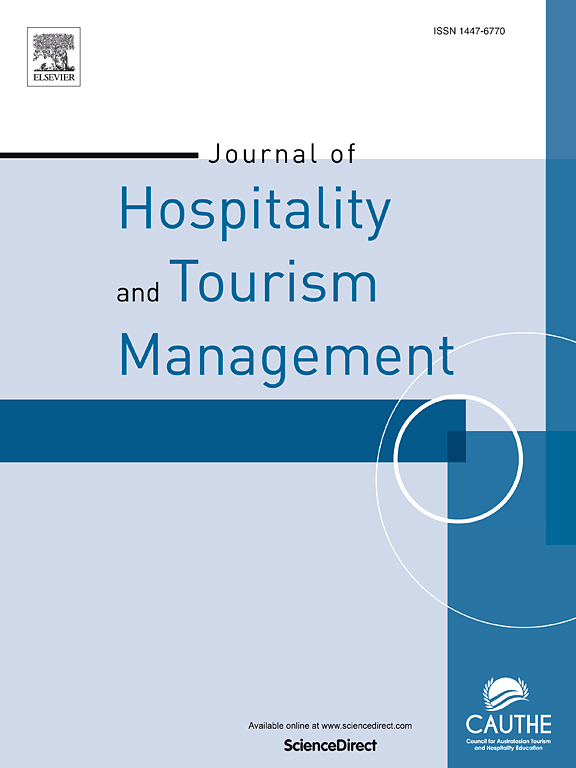如何增强国内旅游业的复原力?
IF 7.6
1区 管理学
Q1 HOSPITALITY, LEISURE, SPORT & TOURISM
引用次数: 0
摘要
提高国内旅游业的抗灾能力(DTR)对于实现旅游业的高质量发展至关重要。然而,由于旅游业在 COVID-19 大流行期间的脆弱性,DTR 的增强途径和相关机制有待进一步研究。因此,本研究创造性地结合简谐运动模型和制度转换向量自回归模型,测算了中国 31 个省份的 DTR,并探讨了其特征,为实证分析奠定了基础。此外,本研究还利用空间计量经济模型实证分析了DTR的提升路径和相关机制。首先,研究发现旅游集聚化、专业化和多样化决定了 DTR 的动态响应特征和空间分布。其次,从空间效应的角度看,一个地区的 DTR 会对相邻地区的 DTR 产生正向影响,特定地区的旅游集聚会对相邻地区的 DTR 产生正向影响。第三,从机制上看,旅游集聚通过优化产业结构和提高生产效率来提升旅游目的地贸易效率,而旅游专业化和多样化则分别通过提高生产效率和优化产业结构来提升旅游目的地贸易效率。这些研究结果为提升 DTR、实现旅游业高质量发展提供了信息。本文章由计算机程序翻译,如有差异,请以英文原文为准。
How to enhance the resilience of domestic tourism?
Enhancing domestic tourism resilience (DTR) is crucial to achieving high-quality development of the tourism industry. However, owing to the vulnerability of the tourism industry during the COVID-19 pandemic, the enhancement pathways and associated mechanisms of DTR need to be further investigated. Therefore, this study measures the DTR of China's 31 provinces by creatively combining the simple harmonic motion and regime-switching vector autoregressive models and explores its characteristics to lay the foundation for an empirical analysis. Furthermore, the study empirically analyzes the enhancement pathways and associated mechanisms of DTR using a spatial econometric model. First, this study found that tourism agglomeration, specialization, and diversification determine the characteristics of dynamic response and spatial distributions of DTR. Second, from the perspective of spatial effects, DTR in one region positively impacts that in adjacent regions, and tourism agglomeration in a specific region positively impacts DTR in adjacent regions. Third, in terms of mechanisms, tourism agglomeration enhances DTR by optimizing industrial structure and improving production efficiency, whereas tourism specialization and diversification enhance DTR by improving production efficiency and optimizing industrial structure, respectively. These findings provide information for the enhancement of DTR and achievement of high-quality development of the tourism industry.
求助全文
通过发布文献求助,成功后即可免费获取论文全文。
去求助
来源期刊
CiteScore
13.30
自引率
8.40%
发文量
177
审稿时长
45 days
期刊介绍:
Journal Name: Journal of Hospitality and Tourism Management
Affiliation: Official journal of CAUTHE (Council for Australasian Tourism and Hospitality Education Inc.)
Scope:
Broad range of topics including:
Tourism and travel management
Leisure and recreation studies
Emerging field of event management
Content:
Contains both theoretical and applied research papers
Encourages submission of results of collaborative research between academia and industry.

 求助内容:
求助内容: 应助结果提醒方式:
应助结果提醒方式:


